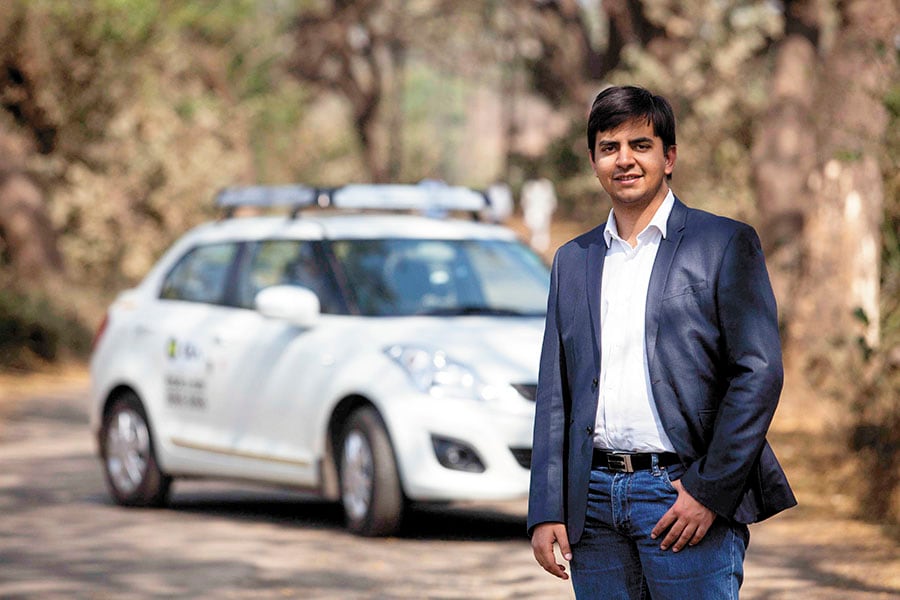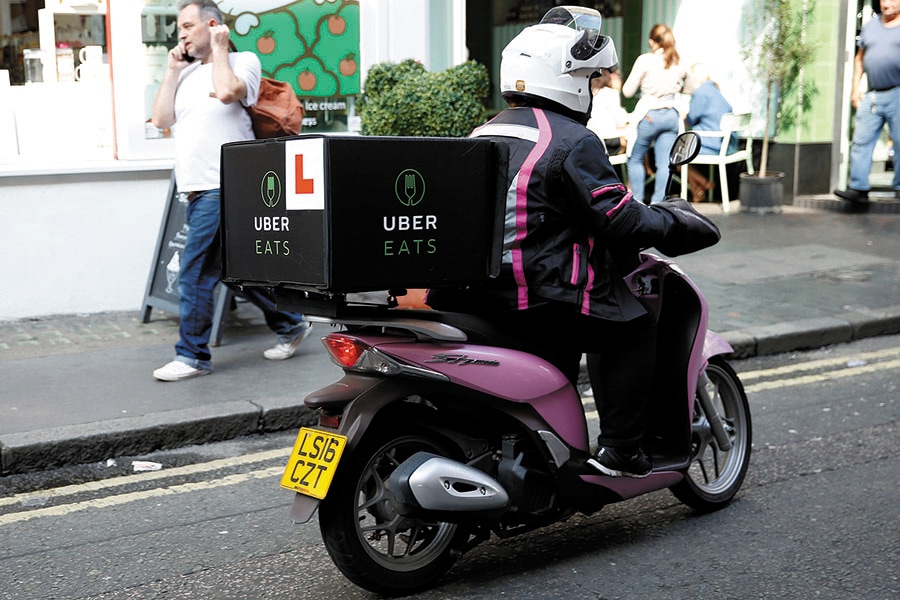
Can Ola ride the gravy train?
By buying Foodpanda's India operations, the cab aggregator re-enters a bruising, cash-guzzling sector
 Bhavish Aggarwal, co-founder and CEO, Ola
Bhavish Aggarwal, co-founder and CEO, Ola
Image: Manoj Patil for Forbes India
Ride-sharing service Ola is trying its hand at food delivery for a second time, buying the India operations of Foodpanda for a measly $40-50 million. Ola’s previous attempt at food delivery with Ola Café came a cropper in 2016, when it shut shop barely after a year of operations. While Ola Café focussed on delivering food fast, the company seems to have gone back to the traditional business model with Foodpanda that puts an emphasis on offering customers a wide array of choices.
Bhavish Aggarwal, the chief executive at Ola, says in a statement, “Foodpanda has come to be a very efficient and profit-focussed business over the last couple of years.” Once mired in controversies around corporate governance, Foodpanda India significantly shrunk its losses to ₹45 crore in FY17 from ₹143 crore the year before, while its revenue increased by 64 percent year-on-year to ₹62 crore.
The food delivery business is traditionally viewed as a cash guzzler, with companies spending significant cash to incentivise consumers and buy their loyalty using offers and discounts. Besides, with an average order value of ₹300-400, food delivery firms struggled to make money with the 10-15 percent commission they charged restaurants on each order. As a result, a number of companies—Yumist, TinyOwl, SpoonJoy and Dazo to name a few—have folded up over the past few years.
Experts, however, claim that food delivery startups have emerged wiser from the slump, charging restaurants a higher commission and consumers a delivery fee to reduce cash burn. And Ola has sniffed an opportunity in the sector that, according to RedSeer Consulting, is poised to grow at a compounded annual growth rate of 60 percent between 2016 ($300 million in gross sales) and 2021 ($2.5-3.5 billion).
“Food tech will grow at a fast clip in the coming year. The primary reason is that the incumbents haven’t even touched all points of the market. For instance, such businesses thrive where there are a good number of migrants and office-going populace, the likes of Bengaluru, Delhi, Mumbai, Pune, Chennai and Hyderabad. Given its hyperlocal nature, food tech startups haven’t yet touched all nodes in these cities yet,” says Sreedhar Prasad, partner and head, consumer markets and internet business, advisory, at KPMG India.
However, the ride won’t be easy for Ola as Uber, its arch-rival in the cab-sharing segment, also forayed into the food delivery business with UberEats in May. Foodpanda also faces stiff competition from the likes of Swiggy and Zomato. Swiggy’s revenue for FY17, at ₹133 crore, was more than double that of Foodpanda, but so were its losses, at ₹205 crore. Swiggy, however, grew faster than Foodpanda in FY17, posting a 565 percent year-on-year increase in revenue as against Foodpanda’s 64 percent. Zomato, which clocked $49 million in FY17 on the back of a robust advertising business that fetched $38 million, saw its delivery business notch up $9 million (about ₹60 crore) last fiscal.
While Swiggy seems to be the leader in food delivery, and Zomato claiming to grow at a fast clip, what might turn the game in Foodpanda’s favour is Ola’s commitment to infuse about $200 million in the company post the acquisition. At a time when additional funding is hard to come by, some serious intent from Ola to champion food delivery will give Foodpanda ample firepower to hold fort. “Ola has the customers and a brand recall for ride hailing. Now, they are looking at what else they can offer,” says Vinod Murali, managing partner at Alteria Capital, a venture debt firm.
But Foodpanda’s rivals are also on course to raise additional funding. Zomato, which has so far raised about $225 million, is in talks with Alibaba to raise fresh capital while Flipkart and SoftBank have evinced interest in Swiggy, which has mopped up about $155 million in funding since its inception in 2015. Besides, Uber, the world’s most valuable startup at $69 billion, is a nascent but formidable force.
 30 is the number of countries in which UberEats operates. It has partnered with 8,000 restaurants in the UK alone
30 is the number of countries in which UberEats operates. It has partnered with 8,000 restaurants in the UK aloneImage: Neil Hall / Reuters
The likes of Swiggy and Zomato are also expanding beyond pure play delivery, with the so-called cloud kitchens. Swiggy, for instance, is establishing its own brands, a parallel to private labels launched by online retailers. For example, The Bowl Company, House of Dabbas and Punjabi Rasoi by Swiggy put it in direct competition with food startups such as FreshMenu, Faasos and Box8 among others, who prepare the food as well as deliver. This vertical has the potential to fetch higher margins than pure play delivery as end-to-end in-house capabilities allow the startups to tinker with prices as well as control costs.
Alternatively, Swiggy and Zomato have partnered with restaurants to open kitchens in localities which are underserved, but promise good business. Case in point: Swiggy’s Access kitchens and Zomato Infrastructure Services.
All this, and more, makes food delivery an expensive land grab for the quartet—Swiggy, Zomato, Ola and Uber. According to Tracxn, a startup tracker, investments in food tech startups shot up to $266 million in 2015 from a modest $60.5 million the year before, before plummeting to $127 million in 2016 and $124 million in 2017.
As the sector starts to get crowded again, some sabre-rattling has started already. In September, Zomato announced that the company will waive off the commission it charges restaurants for food delivery, an aggressive move to fend off competition. Chief executive Deepinder Goyal wrote in a blog post that more than 70 percent of the restaurants listed on Zomato were eligible for the “zero commission” service, based on the number of orders processed every week and customer feedback.
“The food tech industry is at an inflection point in India. There is an increased demand and, at the same time, consumers are spoilt for choice. In 2018, as access to technology gets easier, the industry will see increased adoption from restaurants owners as well as consumers. Innovation and localisation will, therefore, be key to sustain and drive growth and connect with a wider and more diverse set of consumers,” says Bhavik Rathod, head of UberEats in India.
(This story appears in the 30 November, -0001 issue of Forbes India. To visit our Archives, click here.)





